
Do you have a question about the Honeywell ADEMCO VISTA-120 and is the answer not in the manual?
| Brand | Honeywell |
|---|---|
| Model | ADEMCO VISTA-120 |
| Category | Security System |
| Language | English |
Provides a general overview of the Honeywell security system components and purpose.
Explains how a single security system can be shared among multiple users.
Describes networking up to eight VISTA-120 control panels for central management.
Explains how sensing devices are assigned to numbered zones within the system.
Details the system's fire protection capabilities and how alarms are triggered.
Outlines the four modes of burglary protection and system arming features.
Explains how the system responds to alarms, including sound and display notifications.
Describes how the system records and displays alarm events until cleared.
Explains the feature for storing and executing strings of up to 32 keystrokes.
Covers automatic arming/disarming and device activation based on programmed schedules.
Details the system's 20 timers for controlling devices like lights or appliances.
Describes how to use the GOTO command to operate functions in different system partitions.
Explains the function of a Master keypad displaying status for all partitions.
Describes how to view abbreviated user instructions on the alpha keypad display.
Details remote system access and control via telephone using specific modules.
Covers keypad display, sounders, and programmable backlighting.
Describes the 2-line, 32-character LCD for displaying system information.
Details the functions of the primary arming and system control keys.
Explains chime mode, checking readiness, and quick arming features.
Covers numeric key usage, LED indicators, speaker, and CPU status.
Describes the use of function keys for Speedkey macros or panic functions.
Explains installer-programmed exit and entry delays for arming and disarming.
Discusses user assignments, authority levels, and security codes.
Explains the use of a duress code for silent notification and quick arming.
Outlines rules for adding, changing, and deleting user codes and authority levels.
Describes how to exit user edit modes by pressing keys or time-out.
Details the process for modifying an existing user's security code.
Explains how to remove a user's code and associated information from the system.
Explains how to use the GOTO command to access and control other partitions.
Describes the Global Arming option for arming/disarming multiple partitions simultaneously.
Describes accessing and controlling a single partition on a linked panel.
Explains accessing and controlling multiple partitions across linked panels.
Explains how to use the READY key to check for faulted zones before arming.
Details the procedure for bypassing specific zones from system monitoring.
Describes bypassing all open zones simultaneously without individual entry.
Explains how to view zones that have been previously bypassed.
Details arming the system in STAY mode for perimeter protection with entry delay.
Explains arming in INSTANT mode without entry delay for perimeter security.
Details arming the system in AWAY mode for full interior and perimeter protection.
Explains arming in MAXIMUM mode without entry delay for vacant premises.
Details the procedure for disarming the system and silencing alarms.
Explains how to view and clear the memory of past alarm events.
Describes the keyswitch and its indicator lights for system status.
Explains how to arm the system using the keyswitch in AWAY or STAY modes.
Details how to disarm the system using the keyswitch.
Explains how to activate and deactivate the CHIME mode for door/window alerts.
Describes how users receive and view messages from monitoring agencies or installers.
Explains how to manually activate panic functions using key combinations.
Lists and describes Silent, Audible, Personal, and Fire emergency panic functions.
Introduces macros as strings of commands up to 32 keystrokes for automation.
Provides instructions on how to program new Speed Key sequences.
Explains how the system can control locked access doors via keypad commands.
Describes controlling lights and devices using the #70 command from keypads or phones.
Explains how authorized users can manually delay automatic system arming.
Explains the system's 20 timers for controlling up to 96 devices.
Lists action codes for activating relays and relay groups using #77 mode.
Details action codes for automatic arming and disarming functions via #77 mode.
Lists action codes for auto-bypassing zones using #77 mode.
Describes commands for enabling opening/closing time periods via #77 mode.
Lists action codes for managing access points and groups using #77 mode.
Covers additional commands for access control groups and triggers via #77 mode.
Explains the system's ability to record and store up to 512 events.
Details how to select display modes (RECENT/COMPLETE) and partitions for viewing logs.
Explains how to enter Test mode to check system operation and protection points.
Provides steps for testing doors, windows, motion detectors, and smoke detectors.
Outlines immediate actions to take if a fire is detected or suspected.
Details the steps to silence a fire alarm and clear the display after the event.
Explains common trouble messages like CHECK, TRBL, and CALL SERVICE.
Provides general advice on keeping the security system components clean and functional.
Explains how to identify and replace batteries in wireless sensors and keypads.
Details how to silence low battery warning beeps and clear the display.
Offers basic cleaning instructions for keypads and sensors.
Covers checking zones, displaying descriptors, and system arming basics.
Outlines bypassing zones, chime mode, self-help, and system testing.
Summarizes user management, code changes, and accessing partitions.
Details user deletion and activating access relays or points.
Summarizes procedures for single-panel, multi-panel, and multi-view panel linking.

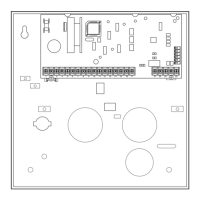

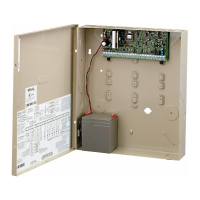
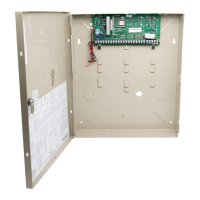
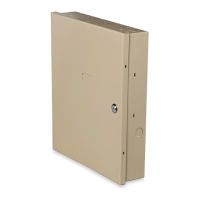
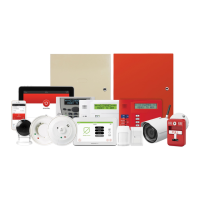
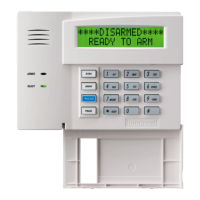

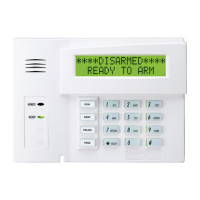

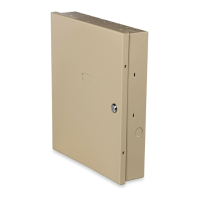
